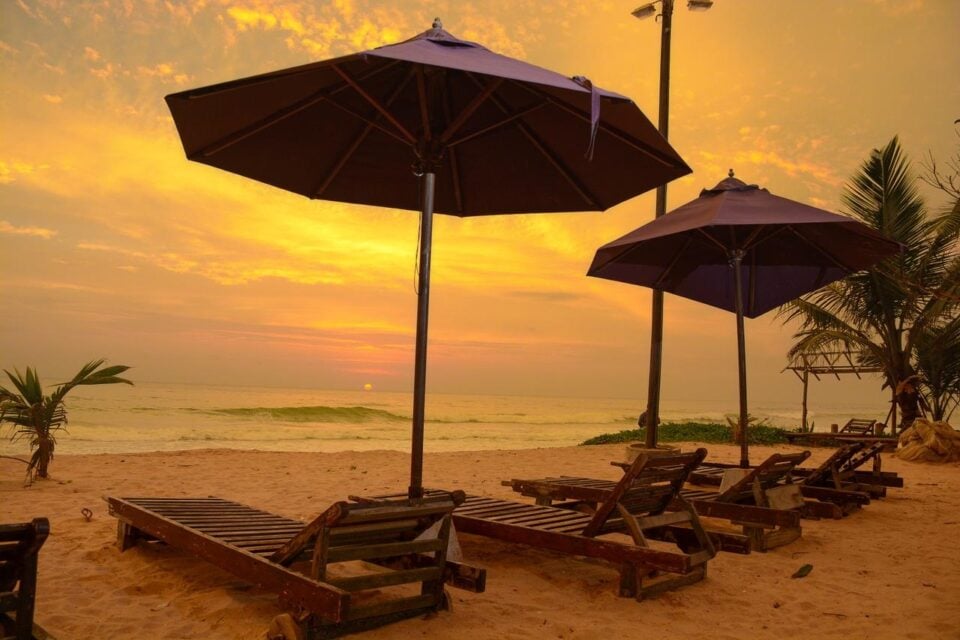This coast in the 70s of the last century was a favorite place for hippies and since then, for almost half a century, Hikkaduwa (Sri Lanka) has been popular as a resort and a great place for surfing. Stretching along the coast of the Indian Ocean, a small Sri Lankan town was badly damaged by the tsunami that occurred in 2004. It had to be rebuilt almost anew, but now all the infrastructure has been restored, and the population, as before, is focused on serving tourists and almost all are employed in this industry.
General information
The resort town on the southern coast of the island is now home to just over 100 thousand people. And the monument at the entrance and the white ribbons that local residents knit on the trees next to it, in memory of the victims, remind of those sad days.
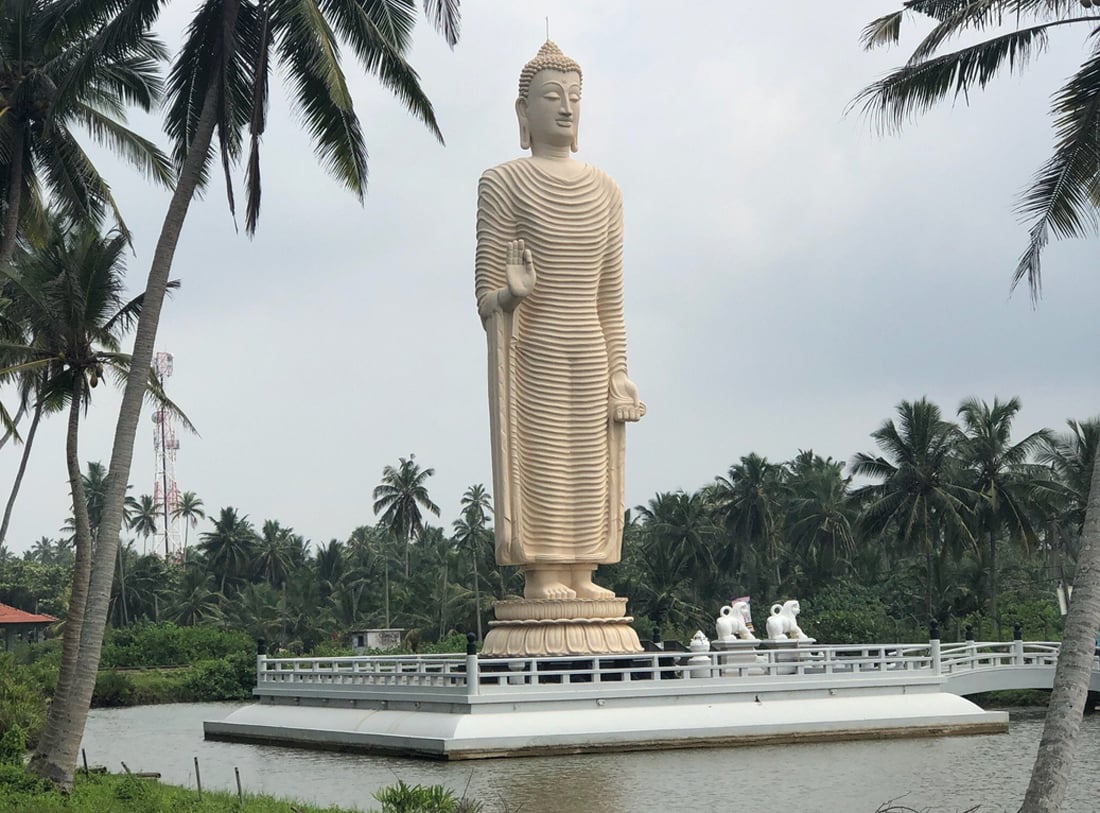
Previously, the settlement’s economy was based on fishing and agriculture, in particular coconut cultivation. Over the past couple of decades, tourism has come out on top, and the city continues to actively develop in this direction. Hikkaduwa in Sri Lanka is primarily visited for beach holidays and surfing. There are suitable beaches for both categories of travelers.
For snorkelers and divers alike, it should be mentioned that Hikkaduwa’s coral shores have unfortunately suffered massive damage over and over again in recent years. Ships pass too close to the corals, causing them to burst and break off. Air and sea pollution do the rest, so half of the reef has been exposed to so-called coral bleaching since 1998. In addition, the 2004 tsunami left huge amounts of debris on the coral after the water receded. Nevertheless, the coral off the coast of Hikkaduwa is still alive, and there are places where you can see a fairly diverse marine fauna.
Many people come to this resort for turtles. Reptiles hatch naturally here, and there are also turtle farms. Some fishermen make a good living by finding newly laid nests and selling these eggs to turtle nurseries. If anything, it’s much better than selling eggs in restaurants. Incubators seem to do a good job of incubating eggs, rearing cubs for three days, and releasing them into the wild. They even have a permanent home for injured turtles and mutant turtles.
How to get to Hikkaduwa from Colombo Airport
Colombo City is 115 km from Hikkaduwa, while the administrative center of Galle is 17 km from the resort. Across the city, parallel to the first coastline, runs the A2 highway-the noisy and busy Galle Road, along which the whole life of the resort is built. The Colombo-Mattara railway, which connects the capital with the southernmost point of the island, is also very close by.
From Colombo Bandaranaike Airport, Hikkaduwa is 140 km away and can be reached by car, bus, train or combination.
Taxi – fast, but expensive

The fastest and most comfortable option, but also the most expensive — $75 if you take a taxi at the airport. This price is fixed for all taxis near the terminal counter. You can bargain with private taxi drivers and the trip will be slightly cheaper — $55-65.
Ordering a transfer in Sri Lanka via the Internet will cost a little more, but at the airport, customers are met with a sign and taken to the specified location. A minivan for a group of tourists (6-13 people) is cheaper (per 1 person).
Bus — longer, but on a budget basis
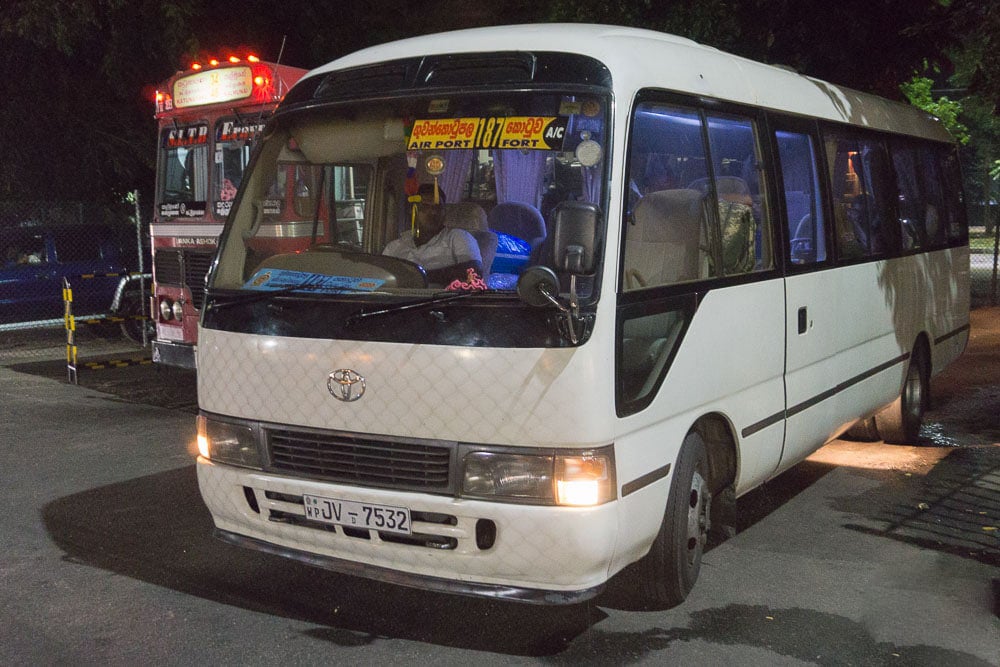
First you need to get to Colombo by bus number 187, ticket costs 150 rupees, travel time is approximately 50 minutes. You need to go to the final stop of Colombo Central. The main train station and bus station are located here. Then there are 2 possible options.
- Get to Hikkaduwa by state bus from Central Bus Station. Any bus that goes in the direction of Galle, Mattara or Tangalla will do. They all go through Hikkaduwa, leaving at 15-minute intervals. The ticket price is about $1.5. These buses have narrow seats and no air conditioning. The journey will take about 3.5 hours. In Hikkaduwa, get off at the main bus station or at the desired stop in the resort area along the main road. Be sure to tell the driver where you want to get off.
- Private express buses run from Bastian Mawatha Bus Station (also known as Pettah) to Galle. They drive frequently: from 3:45 am to 9 pm every 5-15 minutes. The bus station is located across the street from the Central One, and it won’t be a problem to find it. the ticket price is $2.5, and additional charges may apply for luggage. Commercial buses are much more comfortable: they are equipped with air conditioning, seats are more comfortable. Buses travel on a toll highway, which significantly reduces travel time, but they do not pass directly through Hikkaduwa. It takes about 1.5 hours to reach Halle. Then take the 383/3 bus to Hikkaduwa or any other bus heading towards Colombo.Pettah Bus Station website: www.ntc.gov.lk.
Combined option (bus + train) – cheap, but long and uncomfortable
First, take the No. 187 bus from the airport to the Colombo Fort terminus. Take the train there. The cheapest ticket costs Rs 105, in 2nd class-RS 190, on the way 1.5-2 hours. Trains don’t run as often as buses, but there are up to ten flights in any given season. All of them stop in the northern part of the resort (Hikkaduwa railway station), and three trains a day and in the south (Thiranagama railway station).
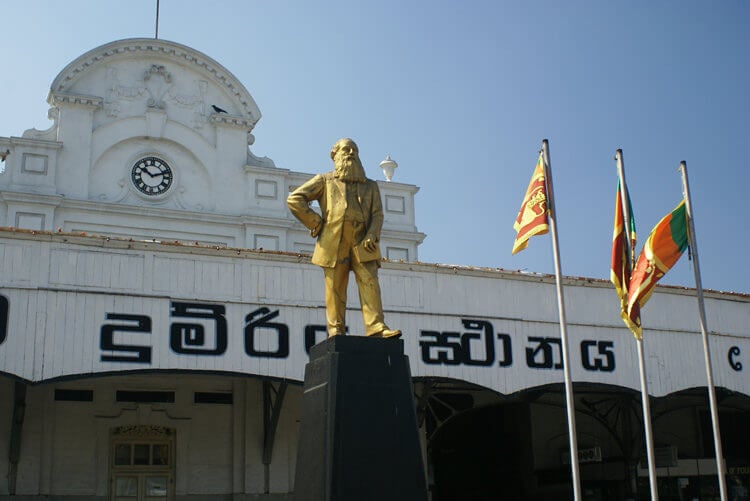
The schedule and current ticket prices can be found on the Sri Lanka Railways website. www.railway.gov.lk.
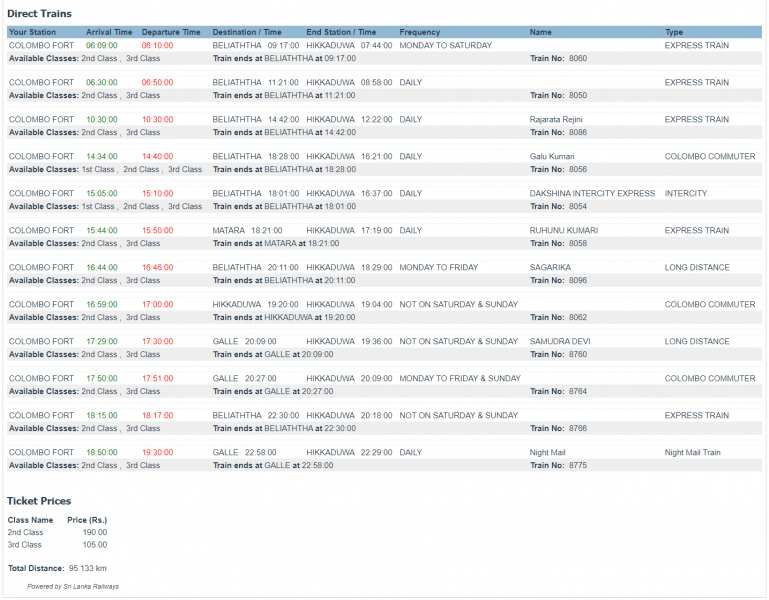
Trains in the daytime can be packed here, people stand in the vestibules, and hang from the handrails. But after 17 hours. the evenings are almost empty. Therefore, before choosing this option, you need to weigh all the pros and cons of such a decision.
Hikkaduwa infrastructure and prices
At the dawn of its fame, this resort in Sri Lanka was considered the most democratic and cheap. In the last decade, Hikkaduwa has been gaining some respectability, with many new hotels being built here, but the old features of this affordable holiday destination are also preserved. Not all of the resort is perfect yet, but fans of this coast come back here year after year.
Food – what and where to eat
The infrastructure of Hikkaduwa is quite developed by Sri Lankan standards, but it cannot be equated with the resorts of Thailand or Vietnam. There is practically no street food like in other Southeast Asian countries. Locals prefer to eat at home, and cafes and restaurants are scattered, as a rule, on tourists. Along the beach line and on the opposite side of the road, there are many food establishments, shops and souvenir shops. Our tourists have a popular cafe where homesick people can taste borscht with cutlets, pancakes, and cheesecakes. And in the cafe with Sri Lankan cuisine (there are several of them on the main street), you can try the specialty rotti and other delicious local food.
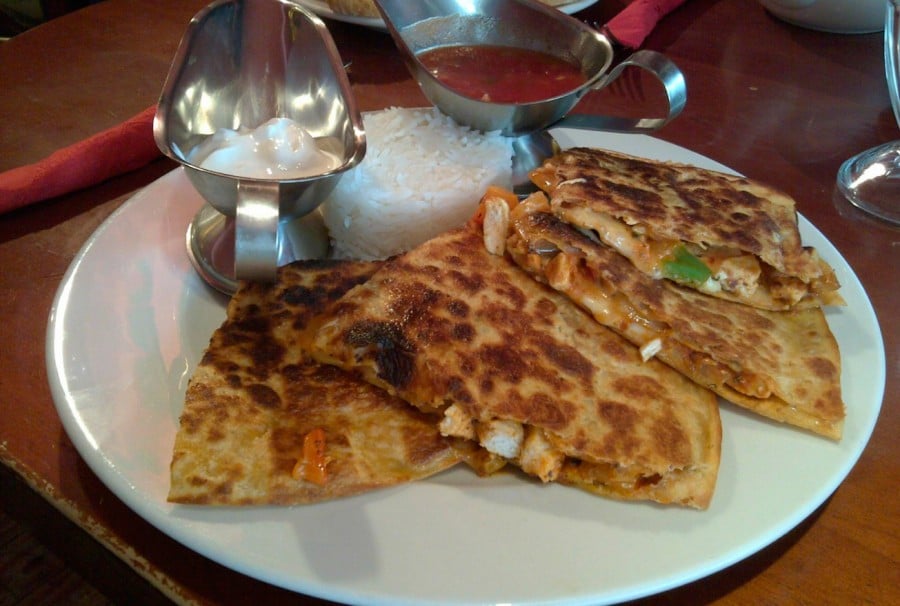
Rotties are sold everywhere, it’s like a quick snack. You can eat in a cafe, you can take it with you. They are pancakes made of thin, thin dough. The filling can be the most unexpected-seafood and finely chopped chicken, vegetables, bananas with chocolate.
In tourist cafes, you can have breakfast for $7-10, and lunch or dinner will cost $15-20 for two. Separately, it is worth mentioning alcohol — in Sri Lanka it is relatively expensive and is not sold everywhere. So a glass of 0.5 local beer costs $3, in stores – $2 Prices in rare establishments where local people eat are much lower, but the level of service and sanitation there is appropriate – often these are ordinary eateries.
Interesting design and delicious food in:
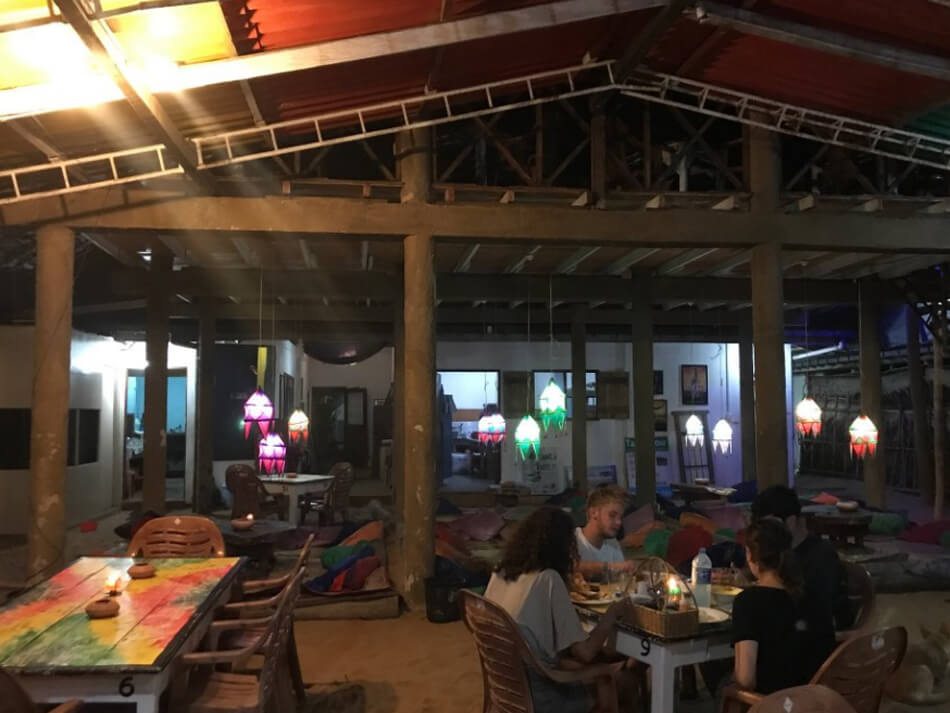
- Top Secret approximately in the middle of Narigama beach (sofas with pillows, hookah)
- The Den Beach Restaurant (at the Time N Tide Hotel),
- and the Cool Spot is across the street from the Hikka Tranz Hotel. Here the prices are affordable as for tourist cafes.
In Sri Lanka, bananas (short and thick), mango, coconut, watermelons, avocado are very tasty. There is no very wide variety of exotic fruits.
You can buy vegetables, fruits and fish at the local market under the roof, which is located almost immediately at the entrance to the city from Colombo, next to the bus station — on the right side of the road (the label is on the map at the bottom of the page). There is a gas station and a bank nearby.
The market is open from very early in the morning, and after 10 o’clock fresh fish may not be available.
Where to stay

Hikaduwa has many hotels, guesthouses, wonderful villas and apartments to suit all tastes and prices. Accommodation in any season can be found both “star” and budget-from $20 to $300 for 1 night. True, very often (but not always) the star rating of local hotels by European standards can be relatively conditional: a four-star hotel in terms of the set and quality of services will not even reach 2**, and quite the opposite. Nevertheless, among the three and a half hundred hotels in Hikkaduwa, you can find five-star hotels on Booking.
You can also rent a house on a monthly basis. In high season, prices start at $270 for a modest cabin. The average cost of a villa or comfortable house is $500-800. Electricity is charged separately. It is better to look for a house on the spot, for this you need to rent a bike or arrange with a tuk-tuk driver. The best way to find housing is to drive around the streets in the area you are interested in and look for the “For rent” sign. Also, do not hesitate to ask the locals, sometimes there may not be a sign, and the house may be rented out.
What else is available in Hikkaduwa
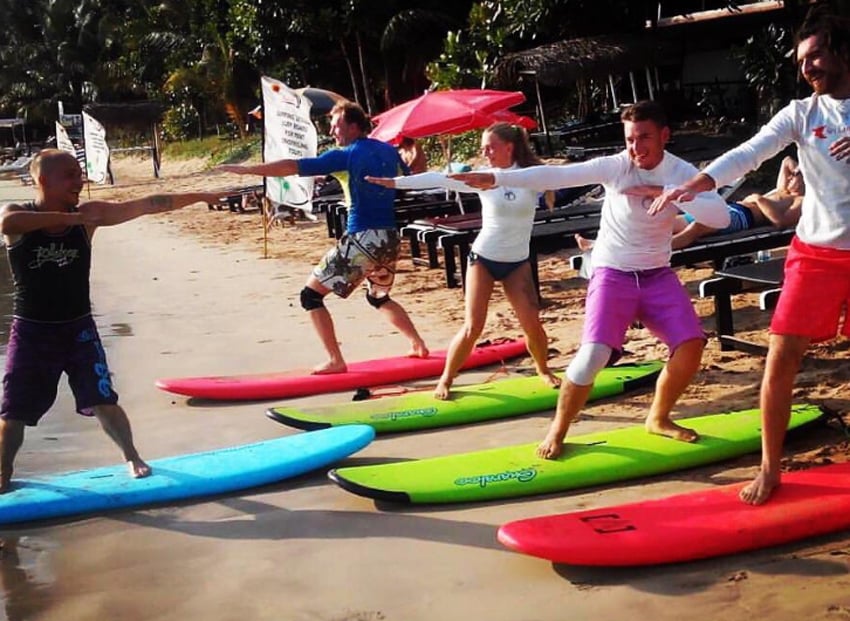
Hikkaduwa has many massage and Ayurvedic rooms, and every big hotel has a surf school. The ocean in this place is a godsend for surfers, it rarely looks like a mirror, even in the most windless months. Training costs about $13 per hour, $45 per day.
There are an incalculable number of skilled tailors in this Sri Lankan town — after the disaster, as part of state assistance to affected families, sewing machines and sewing studios were issued at every turn. In the shortest possible time, you can make custom and inexpensive shorts, a panama hat, shirts or trousers.
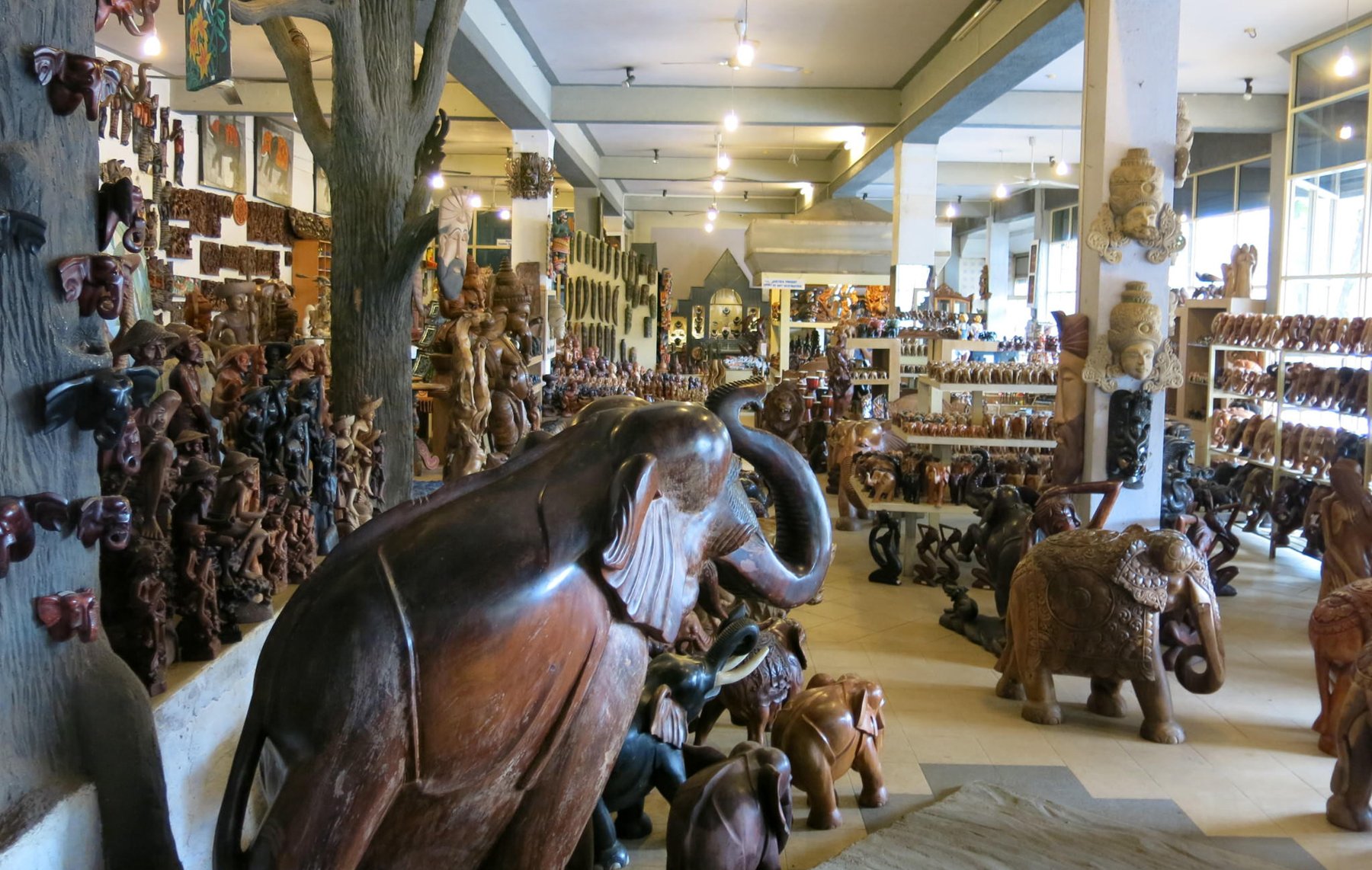
On the main street of Hikkaduwa there are many souvenir shops, souvenirs are common for this region of resort countries and may even have a Chinese or Indian “pedigree”. The original souvenir from Sri Lanka will be a hand-made mask, and the sellers will tell you which of them is the “luck mask”, which is the” health mask”, etc.For very little money in Hikkaduwa you can also buy small souvenirs made of red or black (ebony) wood.
Weather and climate, when is the best time to relax
Sri Lanka is a country of eternal summer, because the temperature during the day is never below 30 degrees, at night it never falls below 20, and water in any season is like fresh milk and does not cool down to more than 25⁰C.
Hikkaduwa, Sri Lanka, weather by month.
| Indicators | Jan | Feb | Mar | Apr | May | Jun | July | Aug | September | Oct | Nov | Dec |
|---|---|---|---|---|---|---|---|---|---|---|---|---|
| t ⁰ C day | 31,5 | 31,7 | 32,6 | 32,1 | 31,1 | 30,2 | 30,0 | 30,0 | 30,1 | 31,0 | 31,4 | 31,6 |
| t ⁰ C at night | 24,3 | 24,2 | 25,1 | 26,7 | 27,3 | 26,9 | 26,5 | 26,4 | 26,3 | 26,4 | 25,7 | 24,9 |
| t ⁰ C of water | 27,8 | 28,2 | 29,3 | 29,9 | 29,1 | 28,2 | 27,5 | 27,7 | 28,0 | 28,6 | 29 | 28,4 |
| Sunny days | 19 | 17 | 21 | 16 | 6 | 3 | 5 | 5 | 4 | 12 | 14 | 16 |
| Light day, hour | 11,8 | 11,9 | 12,1 | 12,2 | 12,3 | 12,3 | 12,4 | 12,3 | 12,2 | 12 | 11,9 | 11,8 |
| Rainy days | 6 | 6 | 8 | 8 | 15 | 17 | 18 | 19 | 18 | 11 | 11 | 10 |
| Precipitation, mm | 68,1 | 73,4 | 94,4 | 108,3 | 215,9 | 202,8 | 222,4 | 333,8 | 245,1 | 155,5 | 124,9 | 110,5 |
So the definitions of “warmest and” coldest ” for this place on earth are very relative, if you look at the data in the table. Indeed, only the values in the second part of the map differ by month: the amount of precipitation and sunny and rainy days.
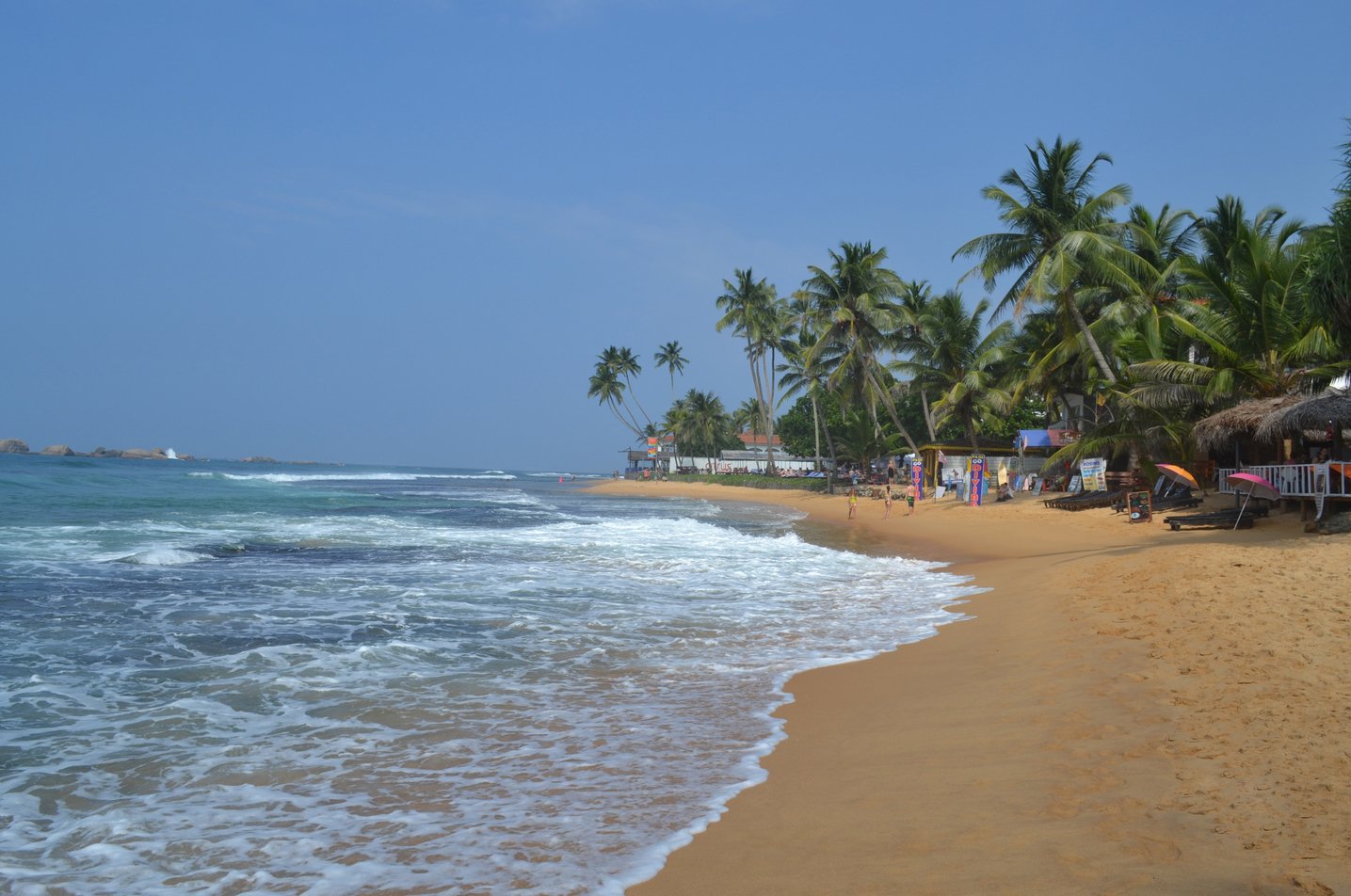
However: the warmest month in the resort is March, and this month is the warmest during the day and night; and the sea is the warmest in Hikkaduwa for many years of observation in April. Air and water temperatures are a few tenths of a degree lower in February and April.
Well, the coldest months are our summer: July, August and the velvet season on our seas-September. The average daily temperature in Hikkaduwa at this time “drops” to 30⁰C. These three months are also the rainiest and windiest in the resort. It rains 18-19 days a month, and the wind strength reaches almost 6 m / s at this time.
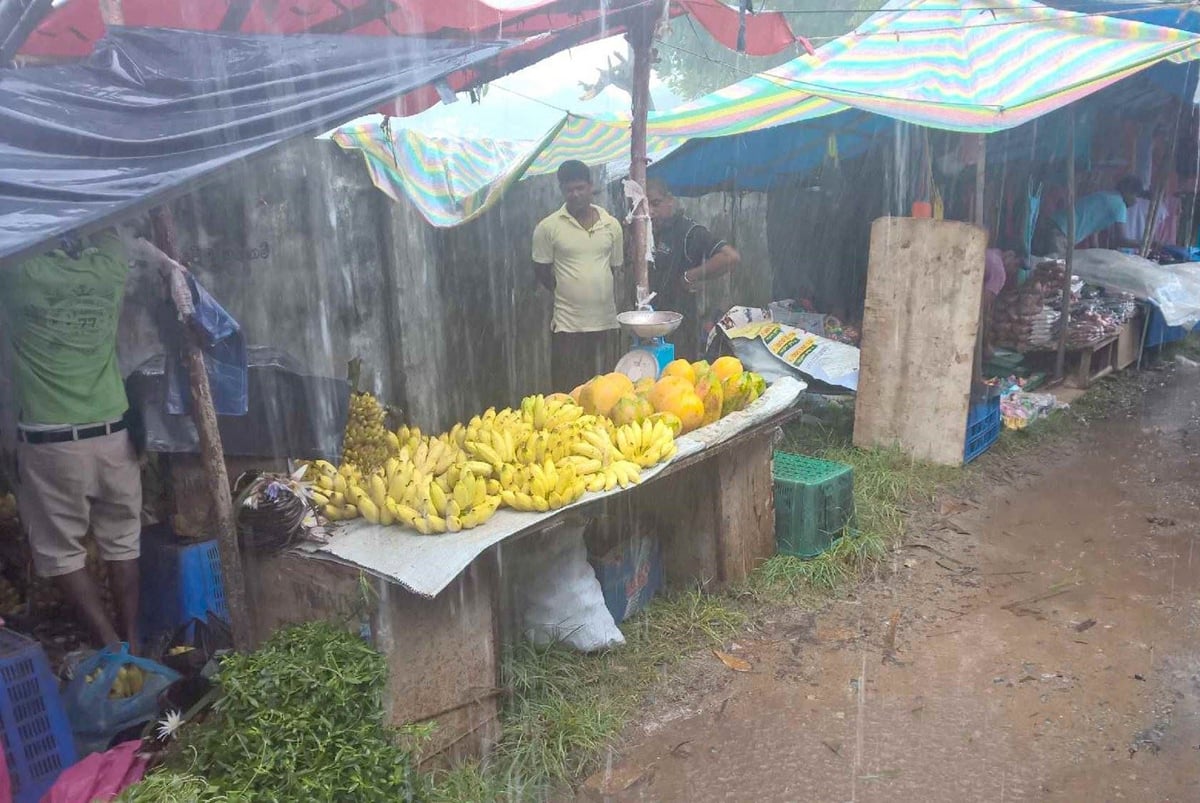
And the sunniest months are January, February and March, the sun in the sky at this time shines for 17-21 days. Most often, the sun looks out in the last spring, first autumn month and all summer months. From May to September, there are only 3-6 sunny days a month on the southwestern coast of Sri Lanka, with heavy rains. And although they are warm, very short, but during the day they are constant. It is this time that is considered the “low season” here. The beaches are deserted and the resort beach life in Hikkaduwa is not so active.
Guaranteed perfect weather for a beach holiday from November to April, at this time and the largest influx of tourists. The day is hot, but in the evening it is fresher, the ocean is no longer agitated, and not as usual, it throws waves, you can swim almost all the time. White clean soft sand, indecently azure sky and water, green palm trees-this is exactly what photos from the resort of Hikkaduwa Sri Lanka look like in high season.
You will be interested in: Tangalle-vacation on beautiful beaches with high waves.
Transportation around the city and transport links to other cities
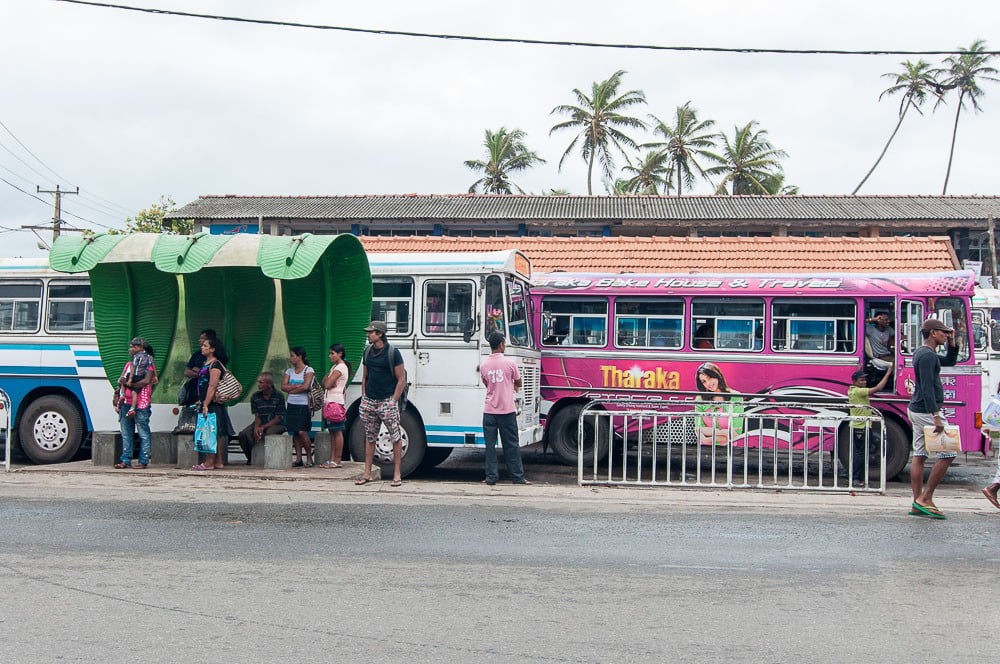
The resort stretches along the coast for more than 5 km, but city buses do not go inland either along the coastal line or in the eastern part of the city – they simply do not exist. But there is a bus station and bus stops, all intercity buses passing on the highway stop there, and tourists vacationing in Hikkaduwa can take advantage of this circumstance, moving around the city or between the beaches.
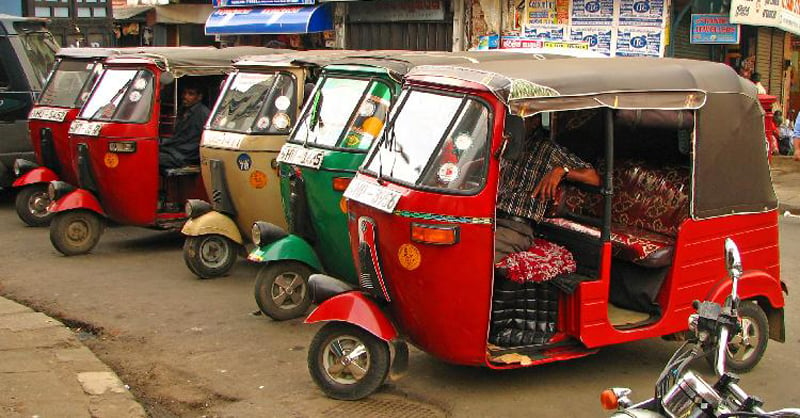
Other ways to get around the city and explore the sights of Hikkaduwa and the surrounding area:
- Taxi, tuk-tuk (there is no such thing as a counter here, everything is on a contractual basis)
- Motobike (800 rupees or more per day). They ask for money or a passport as a deposit.
There are rental points everywhere in Hikkaduwa, but they open almost at lunchtime, so if you want to go somewhere from the hotel in the morning, then you need to rent a transport in the evening.
And many enjoy walking around the city and along the wonderful endless beaches that sometimes seem deserted. After all, along the way you can meet and see so many unexpected and interesting things!
Hikkaduwa Beaches
The beach line here is long, but there are only two beaches with an official name: Hikkaduwa Beach stretches for about 1.5 km in the northern part of the town and Narigama Beach is long, about 4 kilometers, if you move to the south.
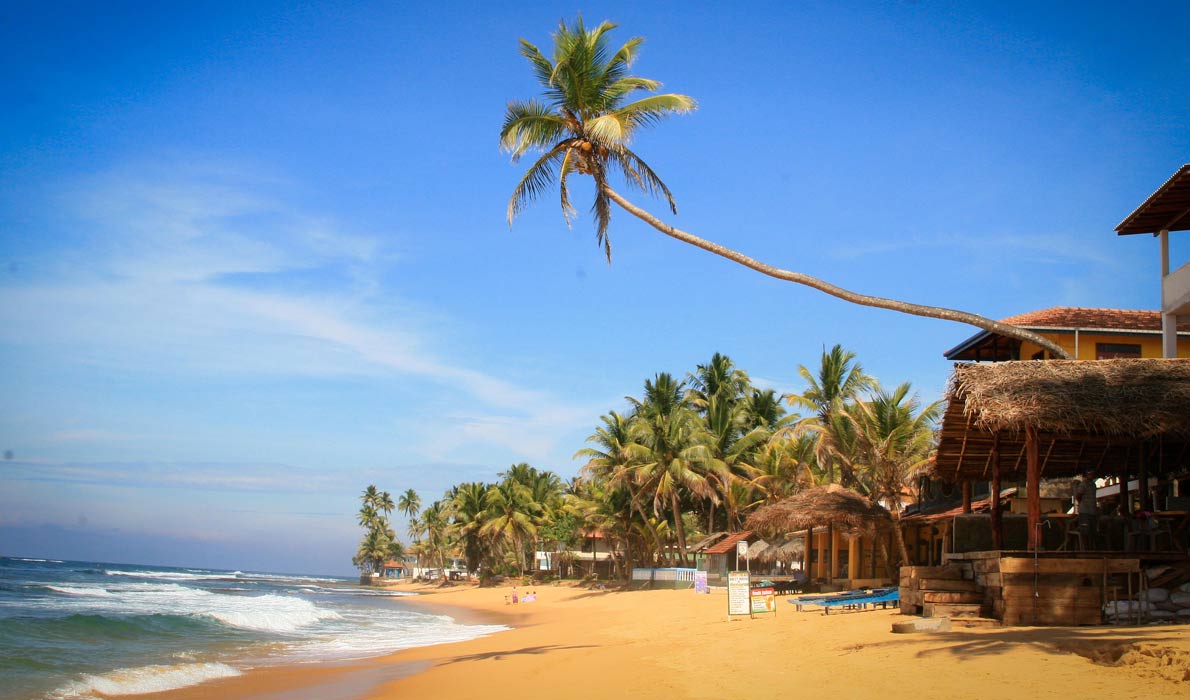
Almost every 200-300 meters of coastline has its own characteristics and has its own recognizable sights, which are noted by tourists who have visited here. What places on Hikkaduwa beach are most suitable for swimming in the high season – January and February-and what can you see here that is unusual?
Hikkaduwa Beach
To begin with, the sand along the entire length of the multi-kilometer coastline is clean, light, the color of coffee with milk and soft. Palm trees almost everywhere separate cafes, hotels and guesthouses from the shore, and grow on the territory of hotels too. Palm trees, as well as surfing – are a distinctive feature and a business card of Sri Lanka and Hikkaduwa, and photos of tourists vacationing on these beaches are full of them.
As for amenities: sun beds are available only to hotel guests, in other places you can sit on your towel, there are no showers, toilets-only in coastal cafes.
Blue Note Hotel Beach
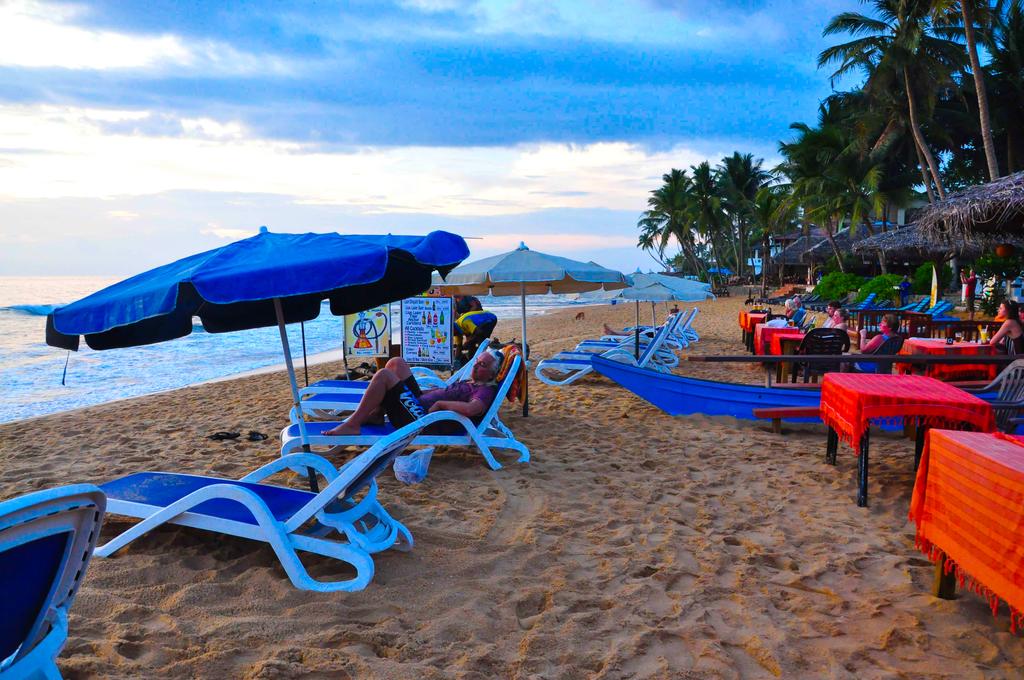
There is warm and clear water and a gentle shore, no rocks and sharp shells. You can see small newborn turtles that flock and separately run into the ocean.
Beach in the bay
The most popular place in January-April for tourists with children. There are almost always no waves or they are small. During the day it is crowded, and in the morning it is very comfortable. The entrance to the water is smooth. In high season, the coastline is carefully cleaned, in low season, cleanliness is monitored, but not so well.
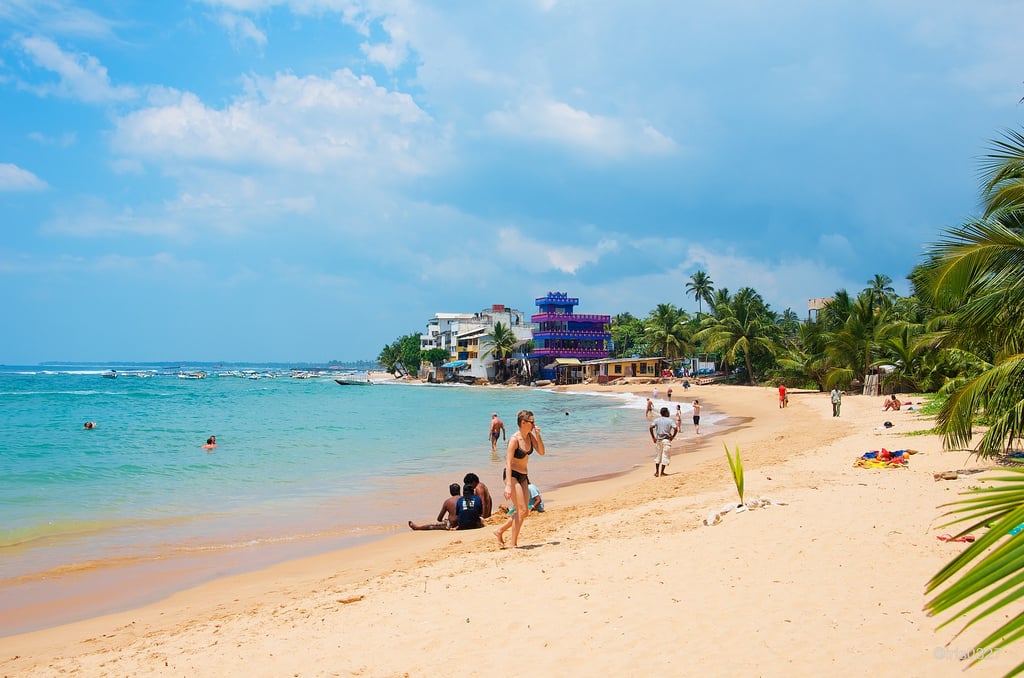
Beach close to fishing boats
It is a beautiful place, has its own exoticism, it is loved by fishermen and photographers, but most often the local population swims here, and tourists bypass it and go further: the smell of kerosene is felt in the air from the accumulation of boats.
Shallow Coral Reef Beach
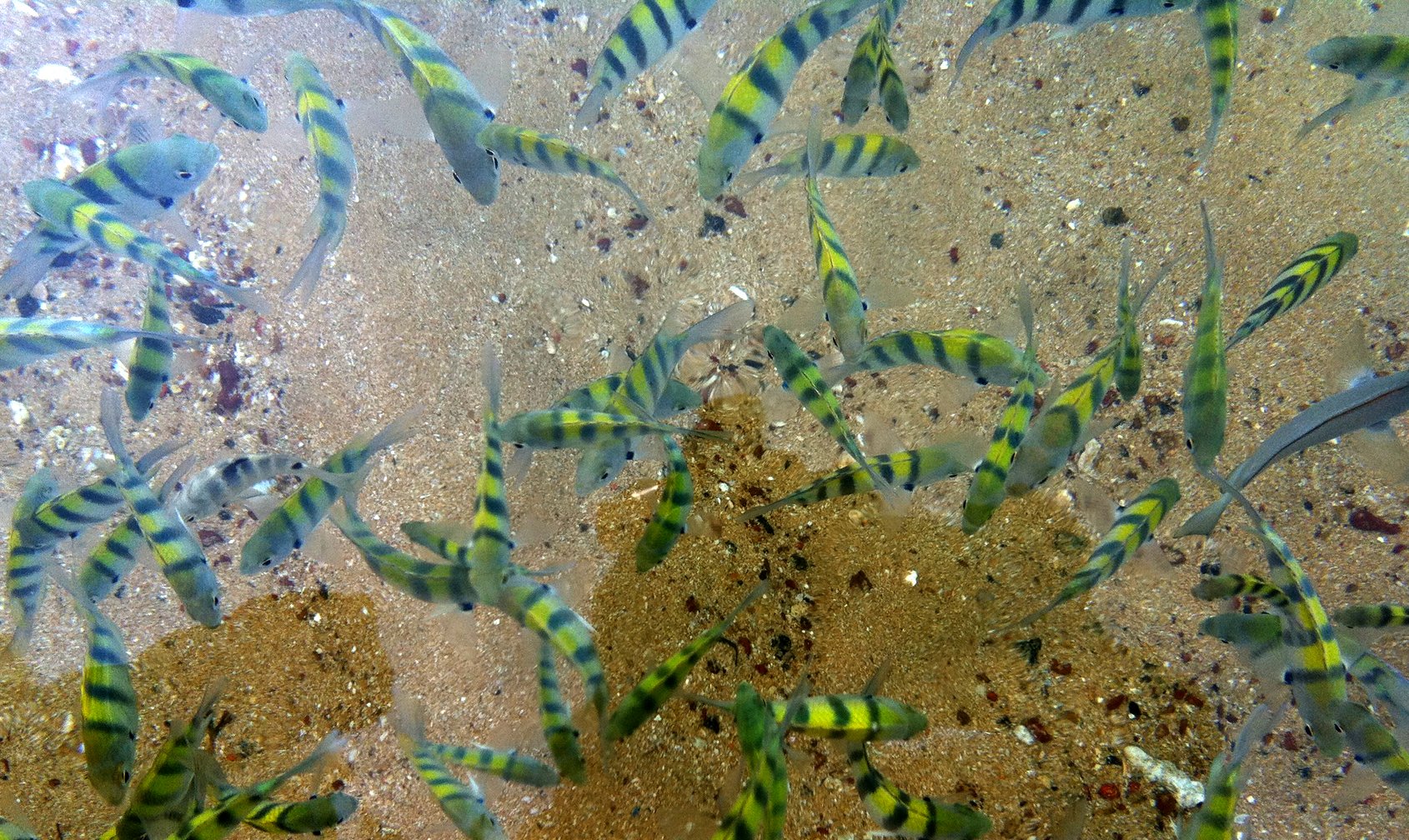
A little further on there is a coral reef, where you can swim and watch the colorful fish that swim in flocks below. Through a mask or just in swimming glasses, it is interesting to look at these colors at a shallow depth, or you can just swim with them without a mask. The lesson excites both children and adults. Small children from shallow waters feed these flocks with bread crumbs and also enjoy swimming among the fish. There are several such tiny pools formed by the natural line of reefs.
Sea Turtle Beach
A unique place near the Hikka Tranz hotel, where you can see huge sea turtles almost right on the shore. There is no full-fledged swimming here, there is a large reef nearby, but playing on Hikkaduwa beach with turtles in the water will give you plenty of fun. They come here every day in the morning and go out to sea in the evening. Turtles are petted, fed seaweed and grass, daredevils dive under them in the hope of capturing unique shots on their cameras.
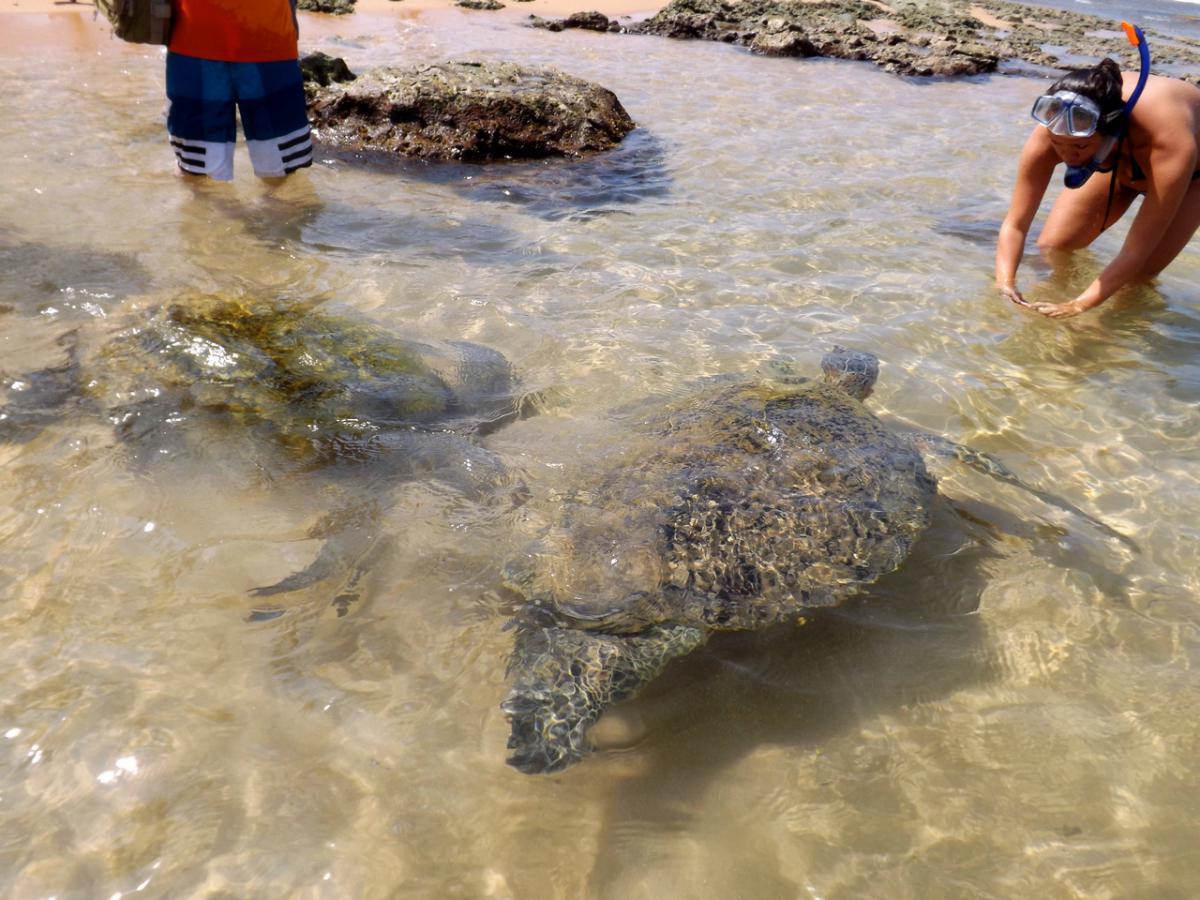
But beginners need to be careful – these cute tortillas have impressive jaws.
And you can swim on the beach of this hotel, it is also a public beach of Hikkaduwa Sri Lanka. Coral Rock by Bansei is only separated from the beach by a line of palm trees. Although the water here seems calm, there is a danger of reef currents, and it often happens that careless bathers are brought to the shore by rescuers.
In the central part of Hikkaduwa Beach, all the restaurants and cafes are open during the day, there is a lot of noise and music. Further south, the beach becomes wider, the coast opens up to all the winds.
See also: Trincomalee is a resort in the east of Sri Lanka with a local flavor.
Narigama Beach
At the widest point (approximately in the middle of the beach, 2 km from Hikka Tranz), the sand strip reaches 100 meters, people become less and the beach is almost deserted for several kilometers. The waves are hitting the shore with increasing force. Swimming here is not the best idea, you can only jump on the waves. All the way there are surf schools and people with boards under their arms, going to test themselves in the ocean.
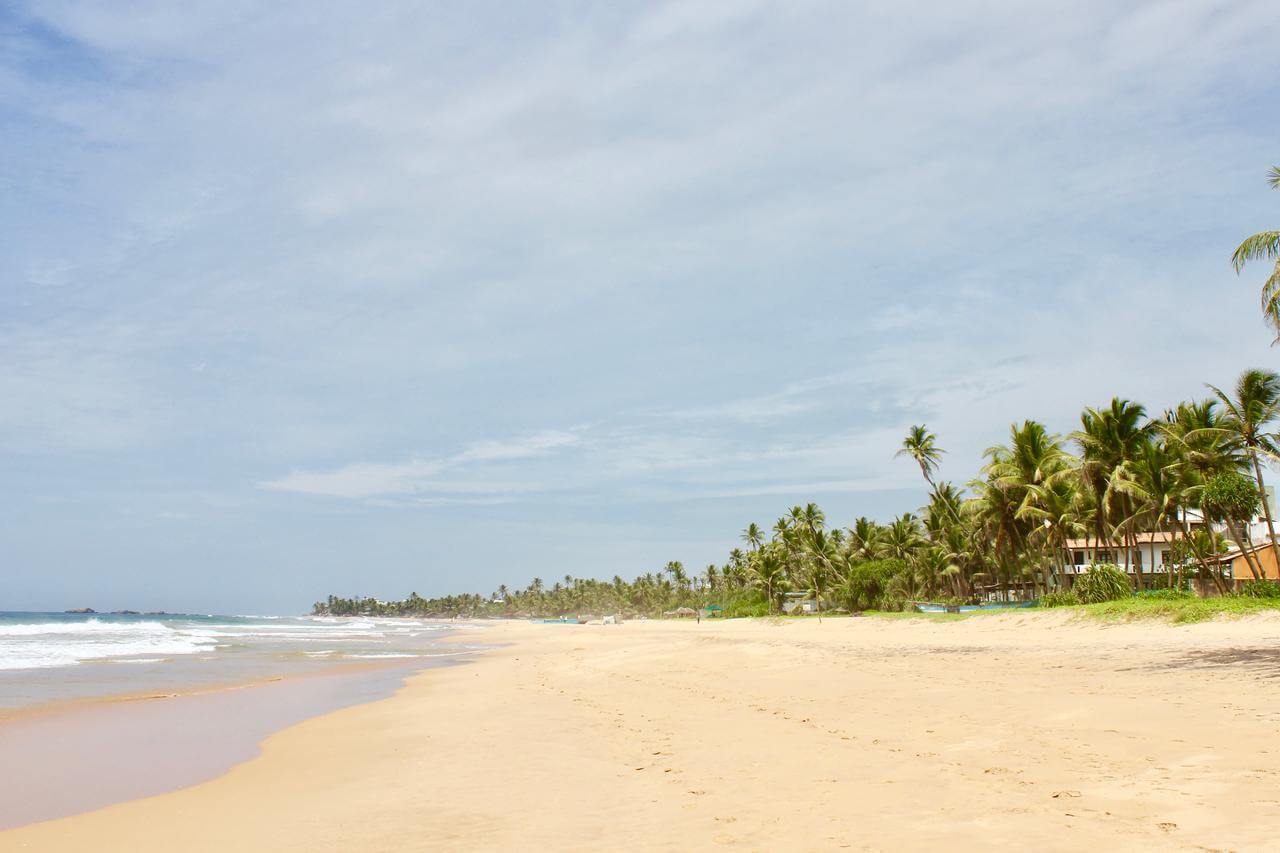
In the morning, in addition to surfers, you can meet groups of yogis or solo yogis meditating on the shore, children and adults playing badminton. In the evening, the coastal cafes are filled with tourists and locals eating dinner and watching the sunset.
Night life
Compared to other Sri Lankan resorts, Hikkaduwa is considered to have a vibrant nightlife scene. And in fact, there are some nice night bars hosting beachside parties, right on the beach. Of course, these clubs are not comparable to night clubs, for example, in Thailand, but if your hotel or guesthouse is somewhere nearby, and you do not go to night clubs, then you will not fall asleep until morning.
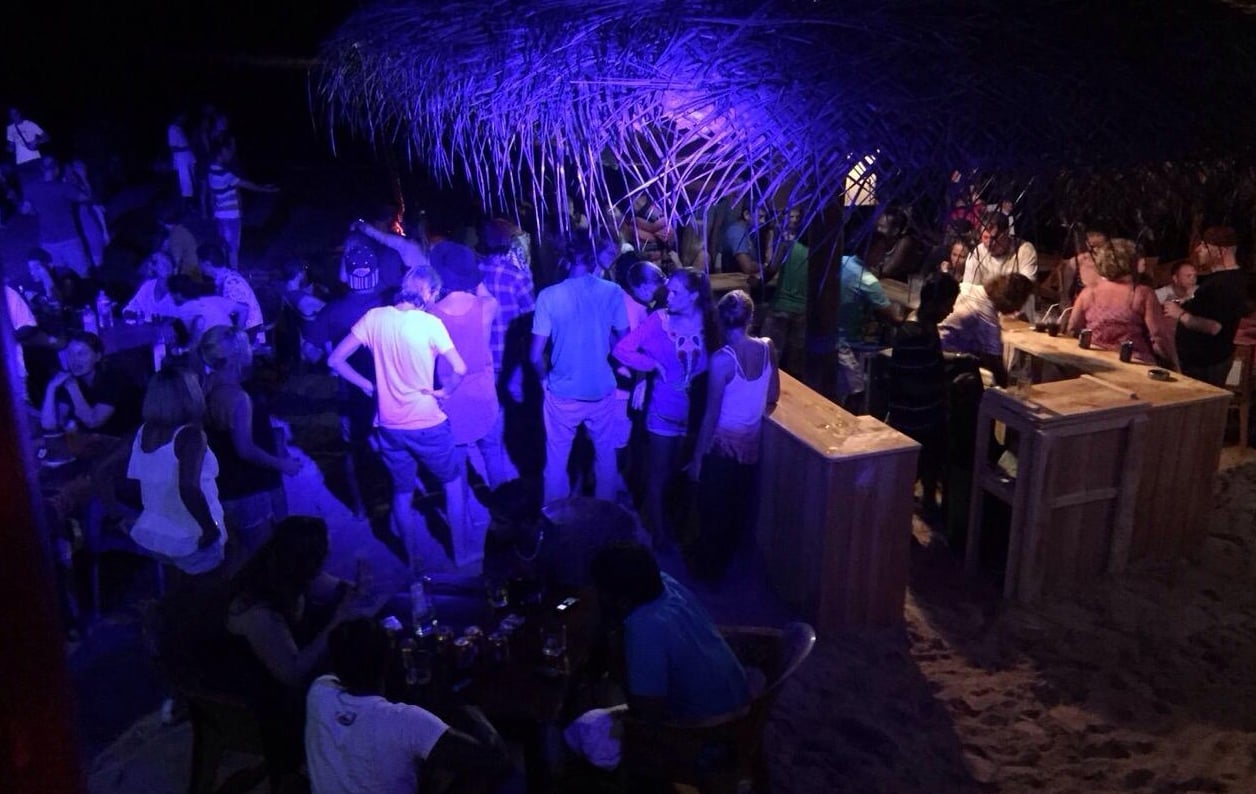
Popular disco bars that work late into the night have their own fans, their own websites and pages on Instagram on Facebook: these are Vibration, Mambo’s and Fanky de Bar. There are also two well-known night restaurants on the beach with Sri Lankan and European cuisine and good music: Harbour and Yula.
What else to do
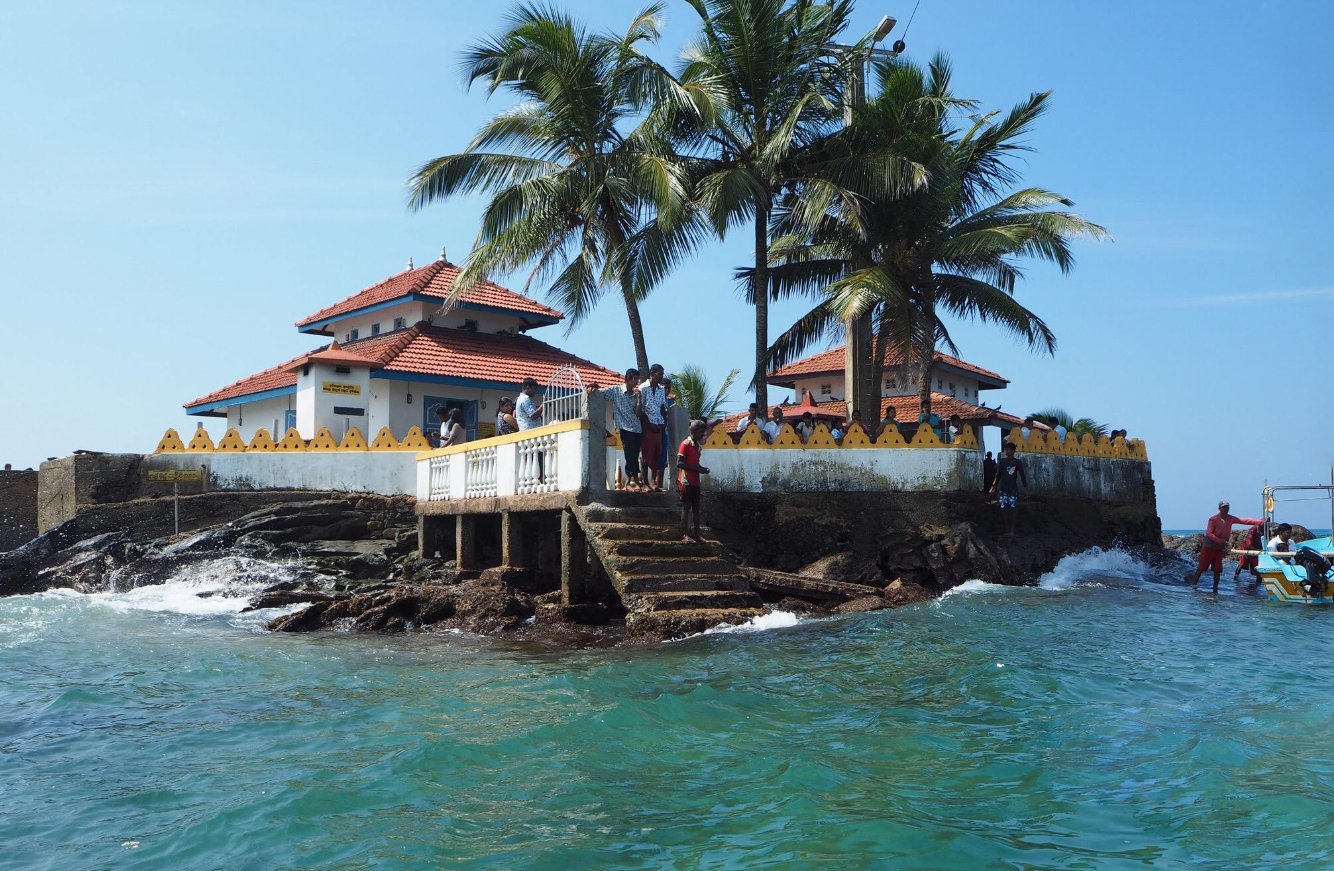
Apart from turtles, colorful fish on the coral reef and the beach itself, there are no particularly important and significant attractions in Hikkaduwa. And if you are not a fan of surfing, but want to stay in this place longer and get to know it better, then you can rent a bike or bike and explore the surrounding area. Such a walk will be pleasant and useful in every sense. Visit the museum and temple of the tsunami victims, and other local temples (the most interesting one is the Sinigama Vihara).
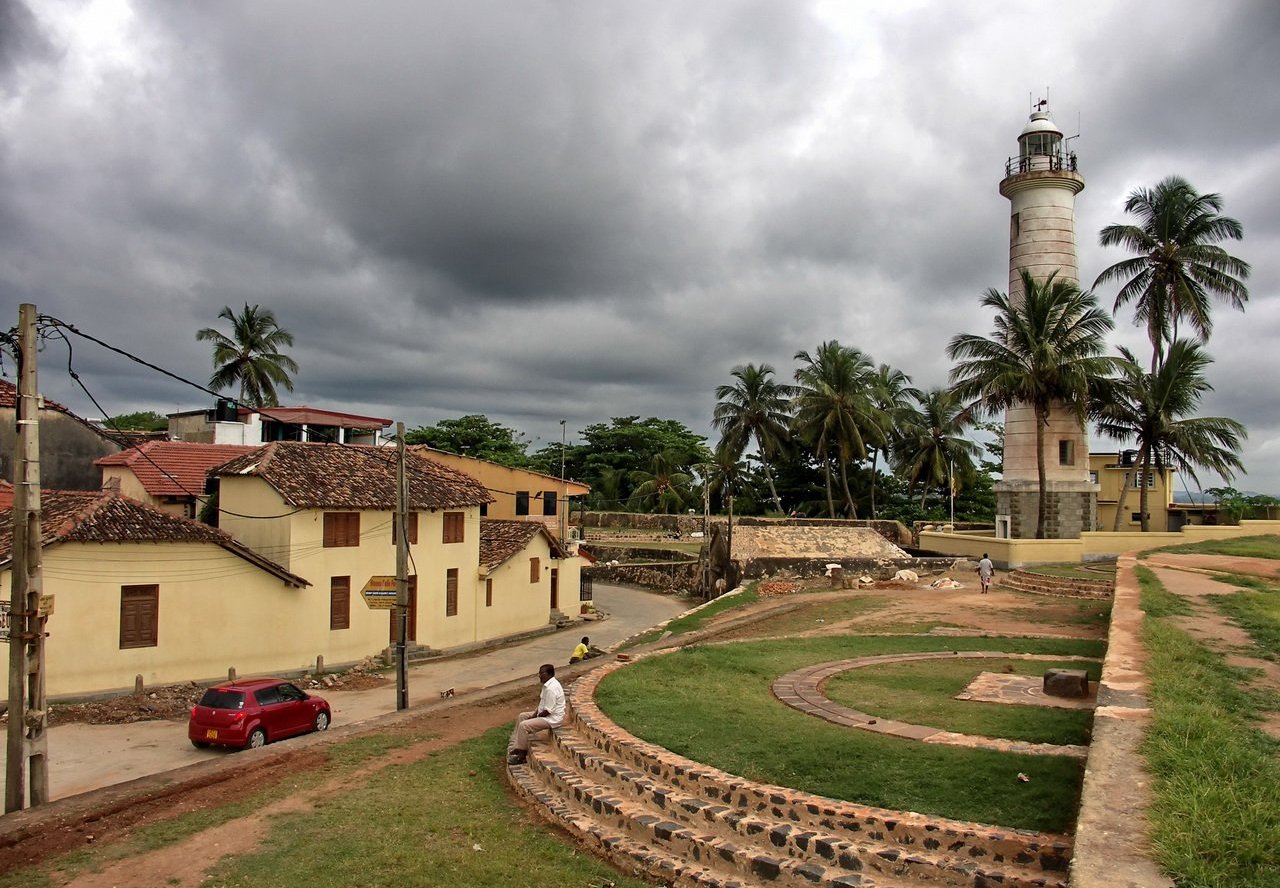
You can go for one day on your own to Galle Fort (the site is a World Heritage Site), Ambalangonda with its famous mask museum, or Bentota resort and another beach resort with beaches without waves — Unawatuna. Such day trips are not very expensive.
If you want to get to the ancient cities of Kirinda and Tissama, to the pilgrimage town of Kataragama or national reserves in Udawalawa or Yala, to Kandy or Sigiriya, then it is better to make such trips through a travel agency, renting a car with a driver. Of course, being well-versed in the area and knowing how to get to these places in Sri Lanka, you can go on an excursion yourself, using public transport. And take your camera with you everywhere, photos are what always prolong the memories of our wonderful travels.
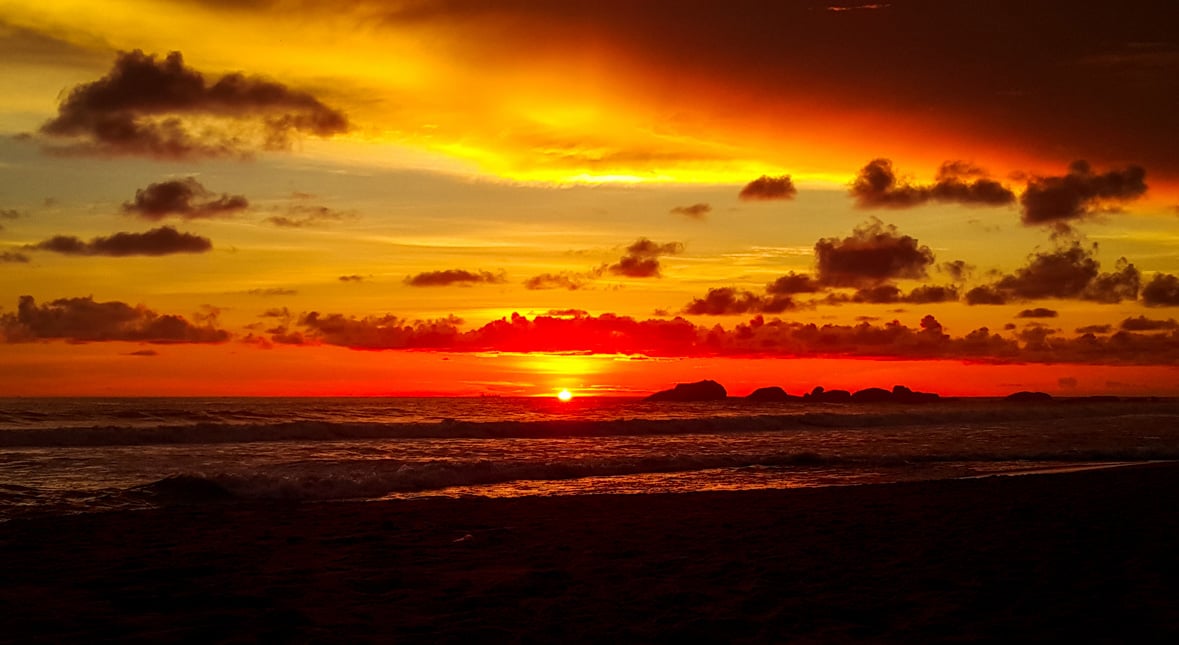
The sound of waves and beautiful sunsets, gentle wind, stars in the high night sky, real Ceylon tea and a huge selection of seafood – many people return here more than once. Because Hikkaduwa, Sri Lanka is a great place to stay almost any time of the year! And even if there is no chic of some other sea island and famous resorts, but in the first days it is simply impossible to take your eyes off the ocean and the endless line of beaches. And at the end of the holiday, romantics (and not only them) think this place is the best on the planet!

